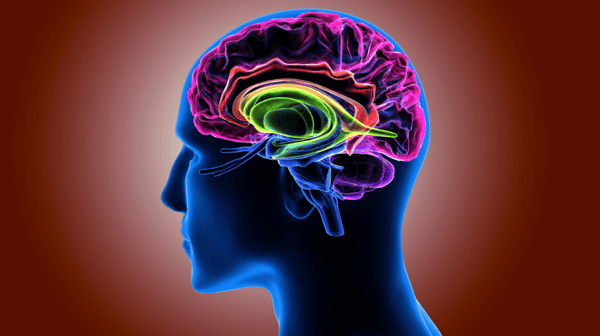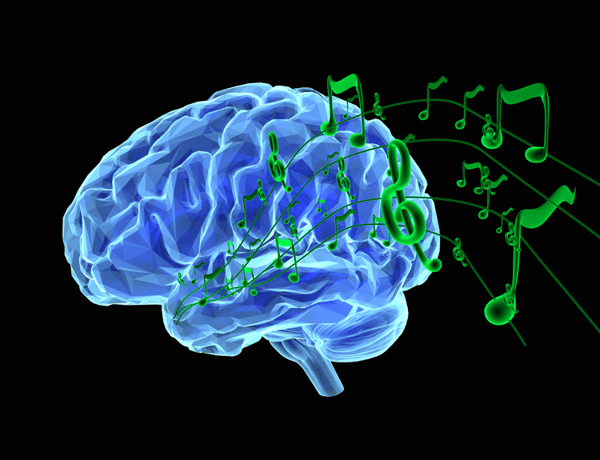How to Build a Music Library to Enhance the Power of Emotion in Your Videos
Soundstripe Team
Soundstripe Team

Feb 6, 2019
Why is it that the theme song to Jaws can cause the hairs on the back of your neck to rise? And why does the title song to Rocky help you push just a little harder at the end of a tough workout?
As a video creator, you already intuitively understand that music holds a powerful sway over the emotional state of your viewers. By understanding how this music-to-brain connection works, you can make even better choices as you build up your video music library.
Whether you specialize in creating wedding videos, plan to become the next James Cameron, or dream of earning tons of money through your wickedly popular YouTube channel, choosing the right royalty free music is an important skill to cultivate. In this article, we’ll look at how music tugs the emotional strings of viewers and then show you how to put this information to work as you create your own unforgettable videos.
Ancient bone flutes and animal skin drums give us proof that humans have been making music for a long, long time. Anthropologists aren’t sure why humans seem innately drawn to music or compelled to create it, but some speculate music was an early way for humans to communicate.
(Ever wonder why it seems so natural for a mother to hum and sing lullabies while she rocks her baby to sleep?)
It doesn’t take a neurologist to recognize that the human brain is hardwired for music. Just turn on Don McLean’s American Pie and try to stop your foot from tapping. Alternatively, if you can watch that iconic opening scene in Chariots of Fire with its soaring melody and not feel a little awe spark in the pit of your stomach, you might want to check your pulse to make sure you have one!
Of course, scientists have taken a gander at this topic to try and figure out what exactly music does to the human brain. After stuffing a few brave volunteers into imaging systems, scientists discovered that music “activated brain regions that are involved in movement, planning, attention, and memory,” according to an article in Medical Daily.

Additionally, an article in Psychology Today tells us that people use music for three important purposes. To:
This article is focused on that final bullet point, but it is worth noting that if you need to cram for an important test or want to speed up your mile time, stick some headphones in your ears and blast your favorite songs.
Music could be your best study buddy or fitness coach. (An article in Scientific American found that “when listening to music, people run farther, bike longer and swim faster than usual – often without realizing it.”)
Why is it that music has such an important emotional pull on our state of mind? Why can Beethoven sooth us after a stressful day of work and Kendrick Lamar switch our mood from fretting to pumped before we give a big presentation?
Let’s see what the science tells us about how music manipulates our emotions in all the right ways.

It may feel like a soaring melody or a song filled with pounding drums can inject adrenaline directly into your heart, but when a certain song abruptly shifts your emotional balance, you actually have your brain to thank for it. Neuroscientists have discovered that music can trigger the release of dopamine into the brain.
You might have heard dopamine called “the feel-good drug.”It’s the neurotransmitter your brain releases when you win a hand of poker or dig into a delicious ice cream sundae. Your brain also pumps out some dopamine when cuddly time starts between you and your significant other.
(Sadly, one of the reasons drugs like opioids and heroine are so addictive is because they also soak the brain in dopamine, making it so difficult to quit them!)
Basically, dopamine makes you feel good, so it’s no wonder that most humans love listening to, creating, and dancing to music. In fact, neuroscientist Valorie Salimpoor explains that “music, an abstract stimulus, can arouse feelings of euphoria and craving.” From a neurological standpoint, music can act like a drug on the human brain.
That’s some powerful stuff, which is why the music you choose for your next video is so important!

Now that you know music can unleash tides of dopamine into the brains of your viewers, how can you use this deeper understanding to improve the emotional impact of your next videos? The first step is easy. By simply appreciating the power of music you’ll be more likely to take greater care in your musical selections. Here are a few other great tips to use:
Do you want your viewers to be scared out of their socks while they watch your creepy horror film? Perhaps you want them to feel hopeful and positive as they watch the video walkthrough of the luxury home you’re trying to sell for your real estate client.
Before you can choose the right music for your video, you need to clearly identify the emotional impact you want it to have on your viewers. This may seem like a simplistic assignment, but you may be surprised by the results.
Don’t be afraid to dig down past the surface. Maybe you want to produce happy, positive videos for your YouTube channel, but what does this really mean? Is your channel funny, heartwarming, charming, or something slightly different? Each of these emotions may point you toward a different musical selection.
Once you’ve identified the emotional impact you want your videos to create, start looking for great examples of videos in your field.
If you want to release the world’s scariest horror movie, re-watch your favorite horror films of all time. Concentrate on the music in the critical scenes. Ask yourself how the music influences the way you feel and why the composure chose that particular song instead of something else.
This assignment doesn’t just apply to horror movies. Are you trying to get more visibility for your wedding videos to increase your business? Check YouTube for the most watched wedding videos and listen carefully to the music selections. Maybe you assumed that soaring, powerful music worked best for such an important event, but now you can see that softer, gentler music actually gives the scene more impact.
Do this for whatever video industry or genre you’re in. Search for the top videos in the field and study what type of music your competition has chosen. Obviously, they are hitting the right emotional chords, and you can learn a lot from their example.
Whether you're filming a moving documentary or building a channel with workout videos, the music you choose will play a big role in how viewers experience that content.
When it’s time to choose the right musical accompaniment to your video, don’t just settle for the first song that seems to fit. Sample a wide array of music. If possible, filter the music by mood and start testing different mood options to see how different songs can change the emotional impact of your scene or video.
Some music licensing sites, like Soundstripe, allow you to filter music by a wide array of moods. This gives you a lot of unique options to sample.
You may be surprised at how differently a scene feels and resonates depending on which music you pair it with.
After watching a scene in your video a million times, it can be hard to really appreciate how different songs can change the impact of the scene. That’s why it’s important to get outside feedback. Add your top musical selections to your video and ask a few friends, family members, or collaborators to give you feedback.
Don’t tell these beta viewers what you want them to feel in the scene or ask questions like, “which option made you feel [insert emotion]?” Instead, let them experience the different songs and provide genuine feedback.You’ll know when you’ve hit the right emotional key when your beta viewers gush about how one song selection grabbed them by the throat and didn’t let go.
When you understand the true emotional value that music can offer to your videos, you’ll realize how important it is to have access to lots of musical choices. These days, there are plenty of sites on the internet(including YouTube) that offer free music libraries, but their selection is limited and overused. Instead, invest in a great music selection. At Soundstripe, our library of royalty free background music is constantly growing. We contract with extremely talented musicians and seek out a wide variety of different sounds.
We also allow our members to filter our music by over a dozen different moods, making it easier for you to find the music with the right emotional impact for your video. Best of all, you can have unlimited access to our music library with a Soundstripe subscription.
Before you buy, take a listen to our music library. Your brain will thank you for the happy hit of dopamine!
Interested in reading more top resources and getting our best filmmaking tips and tricks? Here are a couple of our most popular articles from across the Soundstripe blog: